Cultural heritage
Historical monuments
The former mansion of the Cozitîn family
The current building of the town hall Edineț is located in the former mansion of the Cozițîn family. General data about the history of the foundation of this building are not known. It is precisely known that in the interwar period this building housed the urban gendarmerie, and then in the Soviet period it was used as the headquarters of the district polyclinic.

The mansion with park of the Cantacuzino family from the village meadow
The mansion with park of the Cantacuzino family from the village The clearing. The park and the mansion are located at equal distances from the three villages of the Hincăuți commune – Clișăuți, Poiana and Hincăuți, 18 km from the city of Edineț and 224 km from Chișinău. The manor was founded in the 19th century and originally belonged to the nobleman Gheorghe Loizu. In the second half of the 19th century, the estate passed into the hands of the Cantacuzino family. In the 20th century, the estate was owned by the Schmidt family, of German origin. Also at that time, the central building of the mansion was rebuilt, a fact that emerges from the way the pediment looks, which reminds one of a Lutheran residence. Some researchers say that it would have been designed in the Neo-Gothic style, with decorative elements previously widespread in Western Europe. The family of boyars
Cantacuzino was one of the most prosperous in the Romanian area and has a very rich history. During the Soviet times, the mansion was transformed into a Children’s Home for orphans, and then it was re-profiled into a Union-level Curative Resort for the rehabilitation of tuberculosis patients. In the 90s of the 20th century, the Resort was handed over to the State Pedagogical University “Ion Creangă”. The elders of the village remember that the last owner of the mansion was a certain German count Scheider or Schleder. Not far from the main building of the manor, at the edge of the forest, the last owners of this estate, the Schmidt couple, were buried. Now the burial place is marked by two simple metal crosses, and the remains of the deceased were reburied in the Briceni city cemetery. In 2012, the mansion was visited by the youngest daughter of the last owners of the mansion, who was well over 80 years old. She left the mansion at the age of twelve, currently lives in Romania. Some scenes from the movie “Fiddlers” were filmed inside the mansion. Today it is an architectural monument of national importance. The mansion with park of Vasile Stroescu from the village Brînzeni dates from the second half of the century. 19th century and is made in the classic Russian style. In the years 1870–1880, this economic entity was a well-known example in Bessarabia, due to its high degree of profitability. The complex included outbuildings of all kinds: the house, barn, stable, stables for horses, blacksmith shop. The mansion was typical for the Bessarabian boyars of the second half of the century. the nineteenth. Towards the end of the century, a park was planted in front of the mansion. Today it is an architectural monument of national importance.

Stremiade Manor
The Stremiade mansion – is located in the northeastern part of the village of Şofrîncani. This mansion dates from the century. 19th century, the house in this complex was built during the time of the owner of Greek origin Spiridon Constantin Stremiade (1826-1898). At the beginning of the century the 20th owner becomes Ijacovski, who built a cantonment in front of the house, placed a park with rare species of trees. The buildings suffered from the auxiliary constructions. The roof of the main building was made of shingles, then replaced by slate. The entire mansion itself represents a complex of buildings with a large room in the middle, which itself reflects the architectural development of Bessarabia. (At the moment it is in private ownership).

The hospital with dendrological park in the village of Stolniceni
The hospital with dendrological park in the village Stolnice residents. On the Stolniceni estate, the spouses Mihai and Eliza Stroescu built, following the French model, a hospital for infectious diseases and a dispensary, which they equipped with the most modern devices and a high-performance medical inventory for their time. The hospital complex consisted of the main hospital block, the dispensary mentioned above, the laboratory block, kitchen, pharmacy, warehouses and other household buildings. In 1910, near the hospital in Stolniceni, on the left bank of the Ciuhur, an orchard with fruit trees was planted and a dendrological park was set up. The orchard was planted on both sides of the road leading to the hospital blocks, and the park – behind the hospital. In order to achieve the necessary aesthetic effect, plant varieties were used in the arrangement of the space, such as: firs, pines, paltins, jugasters, poplars, lilacs, etc. Inside the park, an elm alley was created in the shape of the letter S – the first letter in the name of the village of Stolniceni and the Stroescu family.

The building of the former hospital in Trinca village built by Mihai Stroescu in 1912

Theological Seminary from 1875, Edineț municipality
The building of the former Theological Seminary gives the city a special aspect and begins its history following the request of the Diocesan Congress of the priesthood in Bessarabia, in 1869, in the city of Bălți, to welcome the children from the counties of Hotin, Soroca and Bălţi, who could no longer fit in a similar school from the city of Chisinau. On November 1, 1872, the Decision was adopted regarding the transfer of the spiritual school from Balti to Edineț. In the year 1873, the construction works of the school began and also in this year, in September, the studies began. On March 11, 1877, the construction of the school (at the time the “Grigore Vieru” Gymnasium building) and the student dormitory (at the time the “D. Cantemir” Theoretical High School building) was finished.

The Jewish cemetery in Edineț
The Jewish cemetery in Edineț is one of the oldest cemeteries in Europe, being located in the southern part of the city. The cemetery is divided into the old and the new area. In the summer of 1941, 49 concentration camps and ghettos were created on the territory of Bessarabia. One of these camps was in Edineț, where, according to some researchers’ estimates, around 13,000 Jews died. On the right side of the cemetery are two mass graves of holocaust victims. Some old people still remember the year 1941, when the Jews were driven barefoot, in chains, to the cemetery, where they dug their graves, after which they were shot and fell directly into it. The cemetery is included in the list of objectives that are part of various thematic tours through the city.

Religious Monuments
Church "St. Vasile" or. Edineţ
The church in Edineț was built in 1870 from stone on the estate of the Cozițîn nobleman Petru y Sofia. For the construction of the church, the Cozitîn family donated 2000 rubles. It was consecrated by Saint Basil the Great and has the patron saint of the same name.

The "Nasterea Domnului" monastery in the village of Zabriceni
The Nativity of the Lord Monastery was established on August 4, 1999, near the village of Zabriceni. This monastic settlement is located on the edge of a forest, in a picturesque place, being the only monastery in the Edineţ district and the only monastery of monks in the entire Edineţ and Briceni Bishopric, because the other three – Călărăşeuca, Rudi and Briceni – are monasteries of mothers 2 theological schools were also active on the territory of the monastery: the High School Theological Seminary (1999-2009) and the Faculty of Orthodox Theology (2004-2009). The monastery means not only prayer and penance, but also a lot of work. Here the monks prepare with great love various ecological products such as: teas, natural honey, syrups from dandelions and from fir and pine buds, etc. Since 2013, “Biocămara” teas have been certified as ECO products, in 2016, they obtained the protected geographical indication “Teai de Zabriceni”.
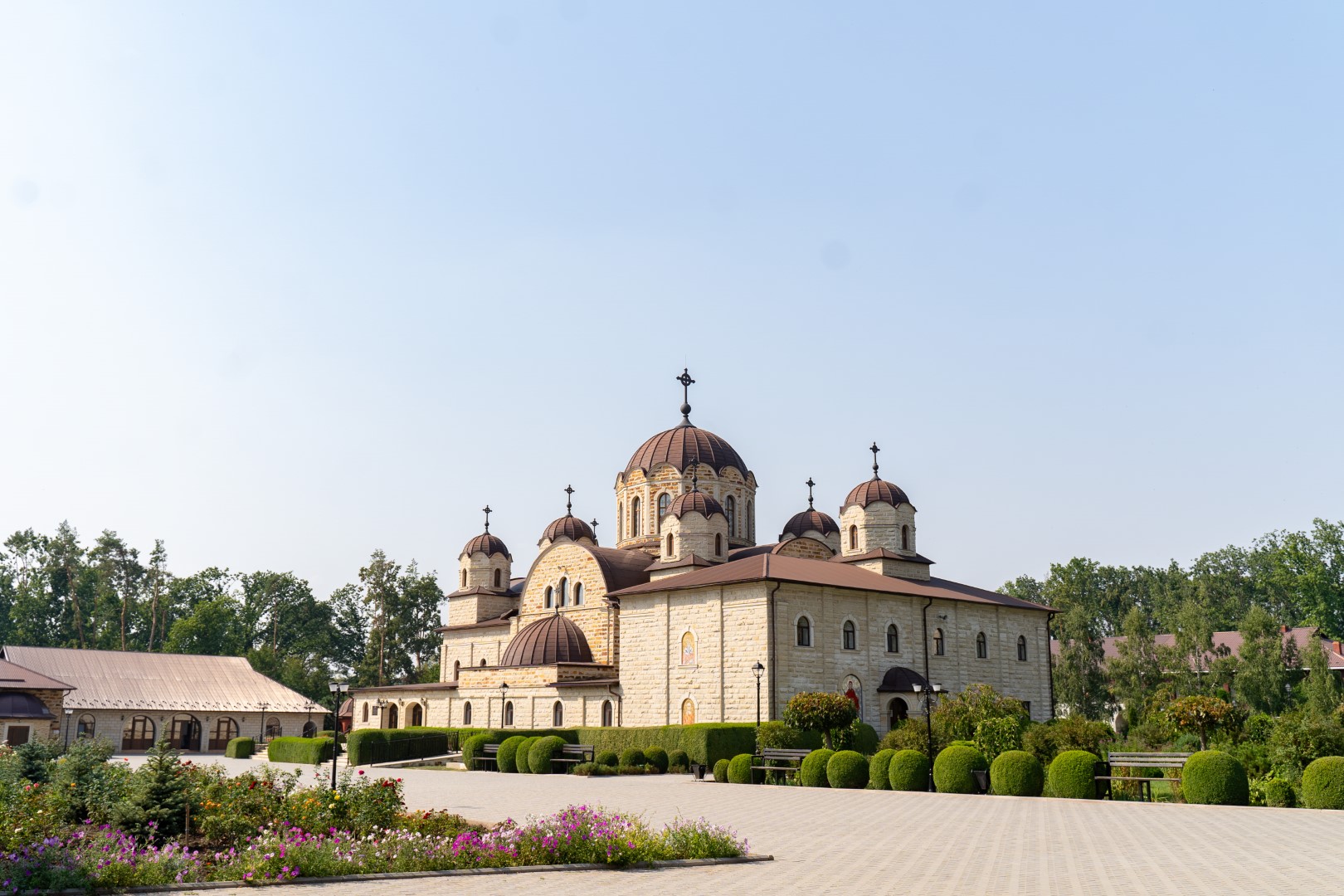
The wooden church "Saints Archangels Michael and Gabriel" in the village of Rotunda
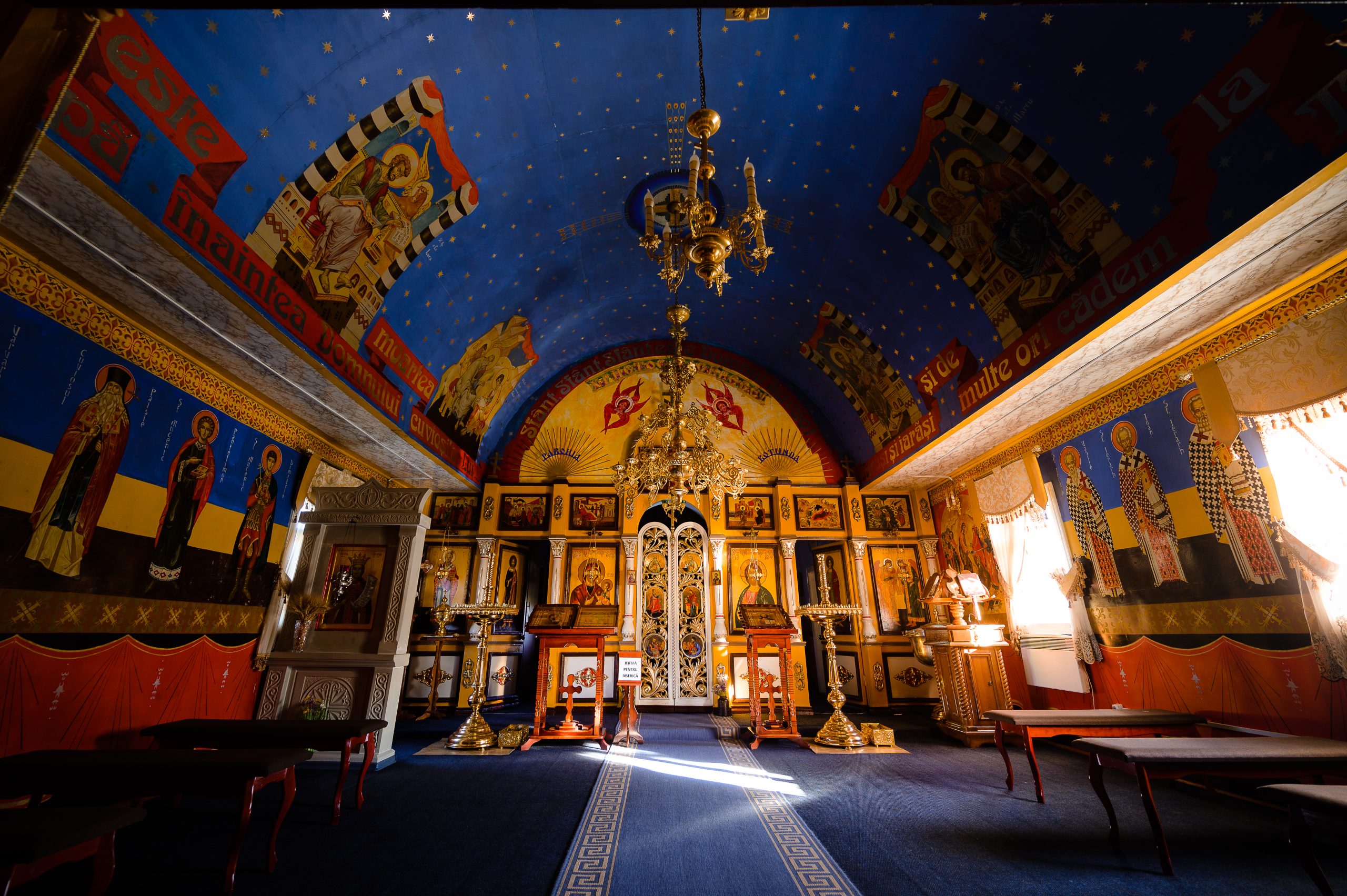
The wooden church in the village of Rotunda is the religious, historical, and tourist jewel of the Edineț district.
This is a peasant house, with a sloping roof, without domes, which has preserved the characteristic dry exterior appearance. the 17th century, having an architectural structure similar to that of the Middle Ages. The architectural plan represents a residential house with a durable shingle roof. The complex consists of a church and a separate bell tower. The church was built of wood by local craftsmen in 1802.
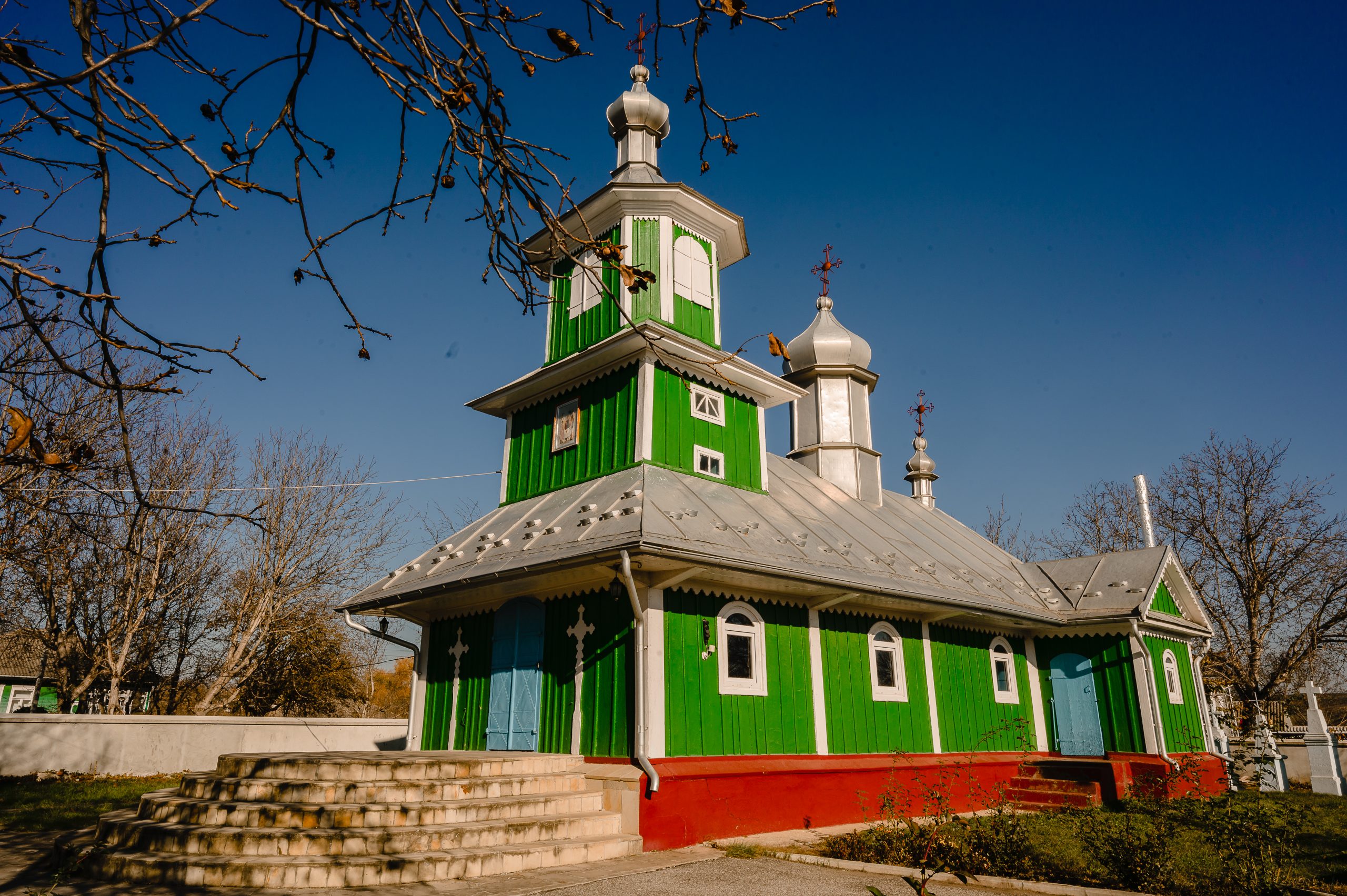
The wooden church "Holy Trinity" from the village of Tîrnova
The church was opened in 1812. The inhabitants of the village, as well as those from the neighboring village, Halahora, participated in its construction. The basic construction was built of wood and the foundation of stone. Although the mural was destroyed, the old icons were preserved thanks to the local people who, during the years of atheism, defended the church in a special way. In the “Holy Trinity” church, divine services are still held today. It is included in the Register of monuments protected by the state as a monument of national importance.
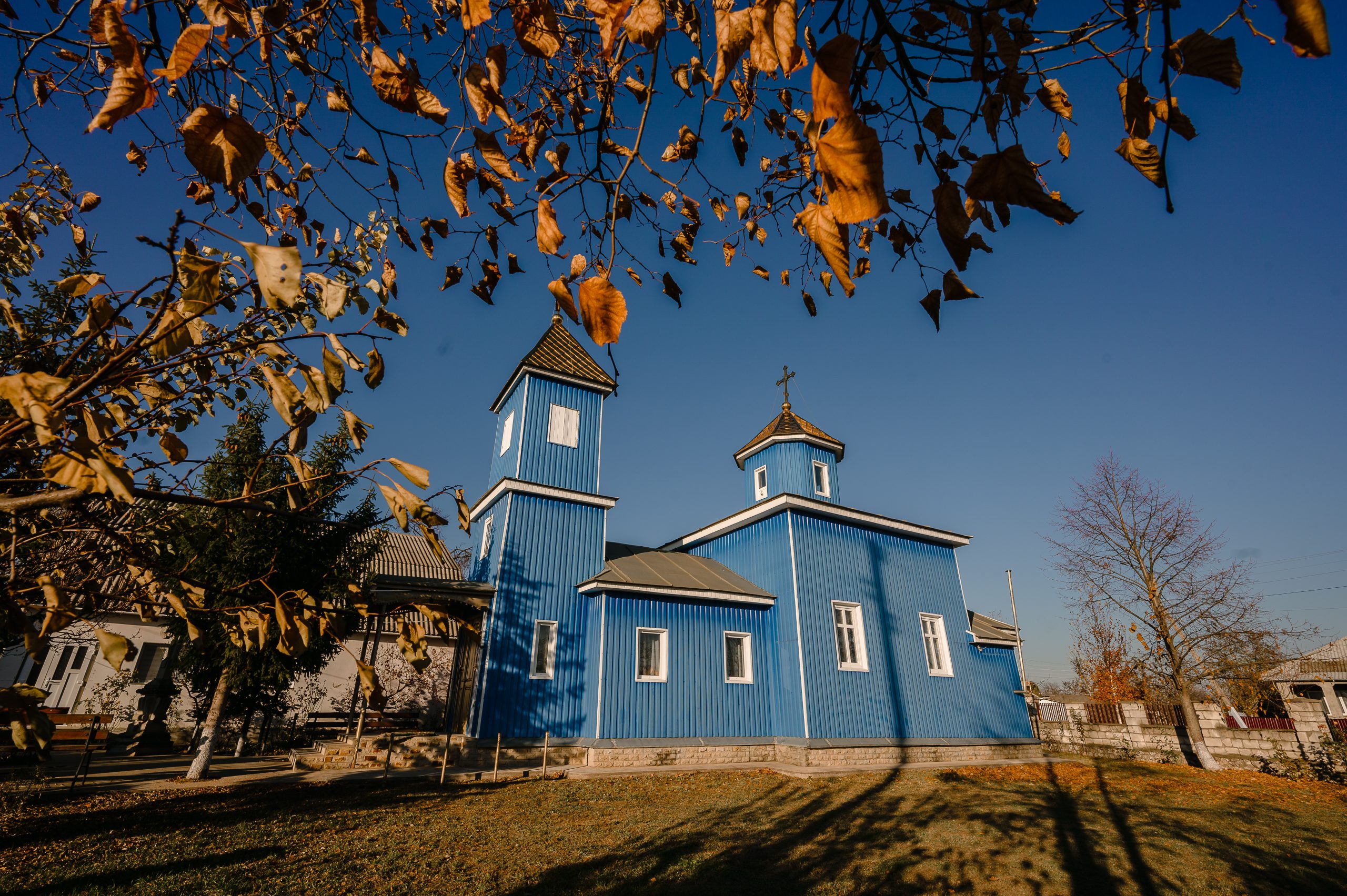
The wooden church in Alexăndreni dedicated to "Saints Archangels Michael and Gabriel".
The wooden church in Alexăndreni dedicated to “Saints Archangels Michael and Gabriel”. This church dates back to 1792. At first it was built by locals in the village of Corestăuți, Briceni district, the shell being built from wooden beams that were covered with boards, and the roof was made of reeds. It is considered that in 1800 it was removed from the village of Corestăuti and brought and assembled in the village of Alexăndreni. It is also included in the Register of monuments protected by the state as a monument of national importance.
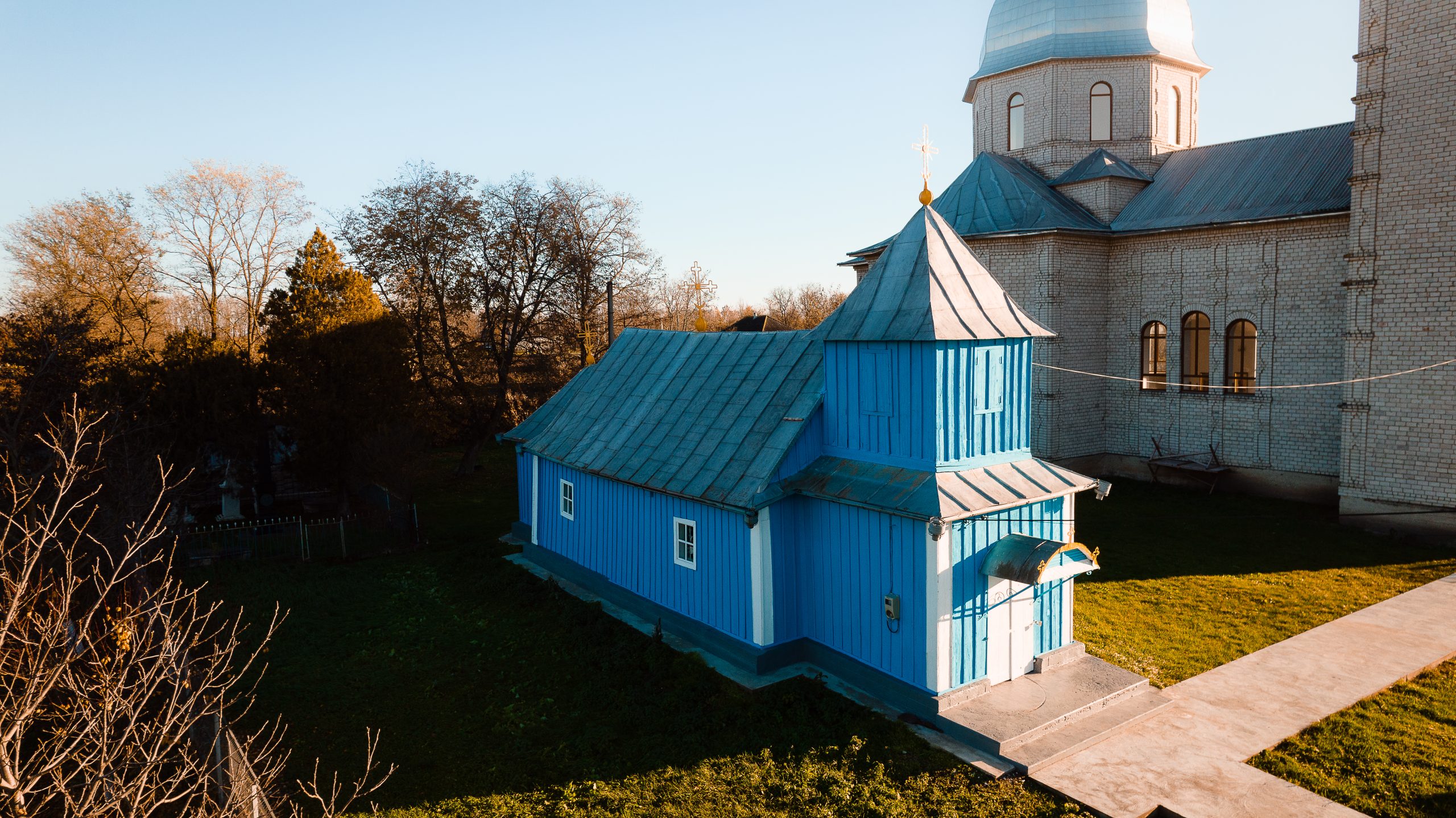
The wooden church from Hincăuți
The wooden church, St. Arch. Mihail and Gavriil” was brought to Hincăuti from Lomancineț, Hotin county. The holy place is part of the category of old Moldovan churches, without a dome, with a gable roof, divided into a porch, porch and altar. Above the roof of the belfry, the nave and the altar is a wrought iron cross. The beams were placed on the stone foundation, lined on the outside with boards. During the Soviet regime, the place was not active. Currently, the wooden church in Hincăuți is an architectural monument of national importance and is protected by the state.

Church "St. Archangels Michael and Gabriel" from s. Trinca
Church “St. Archangels Michael and Gabriel” from s. Trinca was built in 1845 by the Stroescu family. It is an architectural monument of local importance.

Museums
Edineț Land Museum
With a history deeply implanted in the heart of Edinet are also the buildings of the Land Museum. Built in the years 1922-1924 by Druț Leibman Şmil, they were then handed over to the local Jewish Society for the hospital. During the Second World War, in March 1944, both buildings housed the headquarters of the regiment 123 border guards, who had received the mission to restore the border. Later, after the war, the district and dental polyclinic operated in the main premises of the complex. In May 1975, the decision of the Edineț Executive Committee regarding the transfer of the building of the former polyclinic to the museum was adopted. On May 29, 1982, the first permanent exhibition was opened in the Department of History and Ethnography, with a heritage of over 10,000 pieces of various types. In 2019, a new hall dedicated to Stalinist repressions was inaugurated within the department.
In 2021, a new archeology hall was presented to the general public, which includes archaeological objects, an imitation of a burial mound, a cave – the dwelling of prehistoric people and an imitation of an archaeological site where children can dig and discover artifacts.
On January 16, 1984, the Nature Section was opened. This section is divided into four important compartments: soil and subsoil protection, land phenology, nature protection, flora and fauna protection in the Edineț district area. Some plants, birds and insects included in the Red Book of the Republic of Moldova are also exhibited here, various stuffed animals, such as: red deer, rock marten, wild boar, various birds, etc. 697 exhibits are displayed in the Nature section. Virtually a new museum institution, the Folk Art Section – was opened on January 15, 1993. Its purpose was to study customs and traditions, as well as to promote local folk crafts en masse, to brings the folk craftsmen from the northern part of Moldova out of anonymity. The heritage of this section includes 496 exhibits.
In 2016, in the popular art section of the museum, the “CASA MARE” room was opened, a stationary exhibition was set up here with all the things related to the big house of our nation. The museum is visited not only by citizens of the Republic of Moldova, but also by guests from different countries such as: Latvia, Lithuania, Italy, Germany, Israel, Russia, Belarus, Spain, USA, etc.
The Edineț Land Museum is more of a cultural-scientific institution, and its collaborators continuously carry out their activity of collecting materials and carrying out research on various topics of increased interest for the locals, but also for the entire republic.
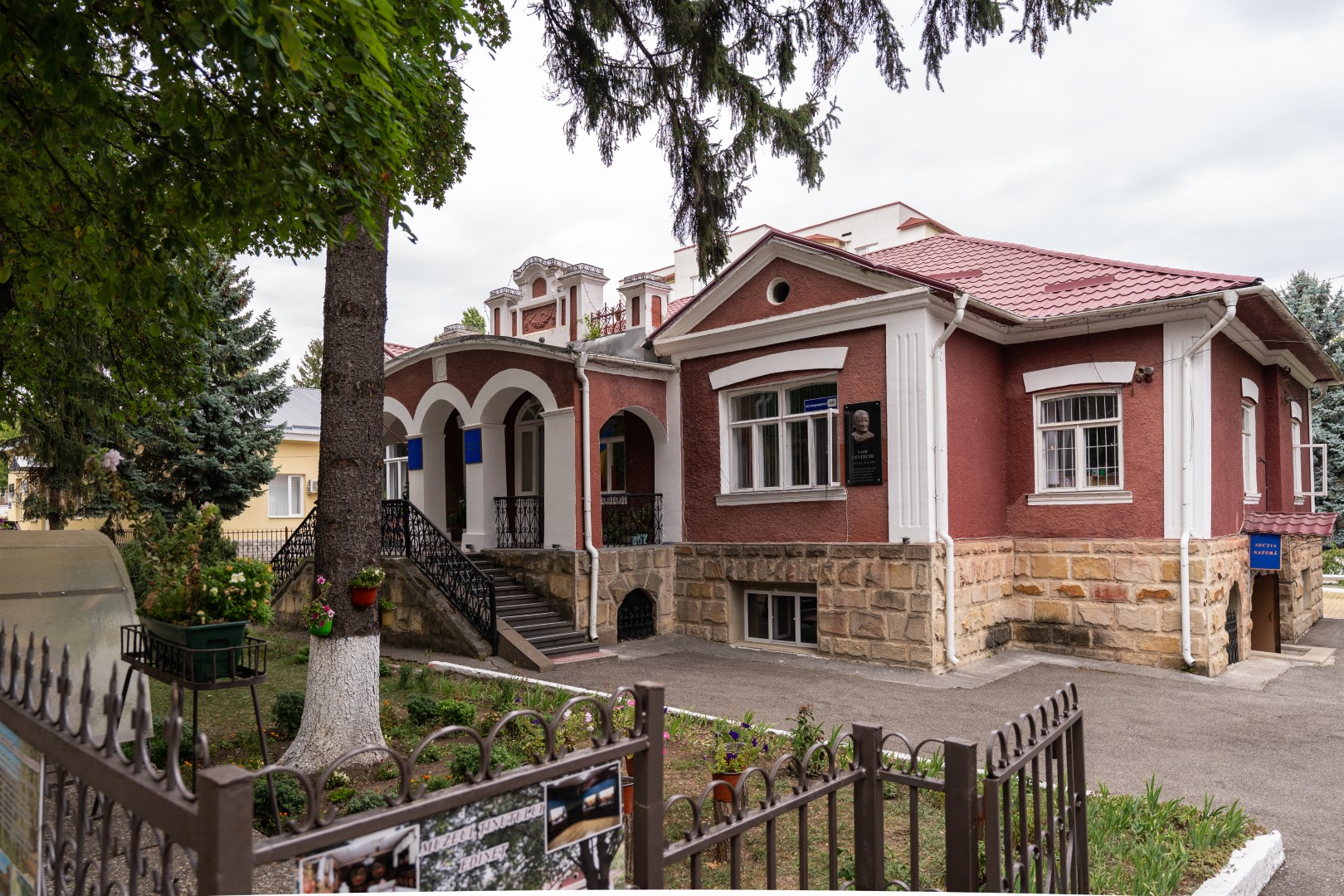
The "House of Memories" museum in Hincăuți village
In the small village of Hincăuti, in 2022, the launch of a private museum took place. From the very beginning, it has positioned itself as a location full of residents’ memories and which opens the curtain of the theater of rural life, represents the soul and culture of the village. The museum consists of two halls. In the first room, the visitor can learn about various historical landmarks of the village of Hincăuti and the fate of its inhabitants. The second hall is dedicated to handicrafts and cultural traditions. The true pearl of the museum is a large old carpet, made by local craftsmen back in the 1880-1890s, donated to the museum by Nicolae Baciu, a resident of the village.
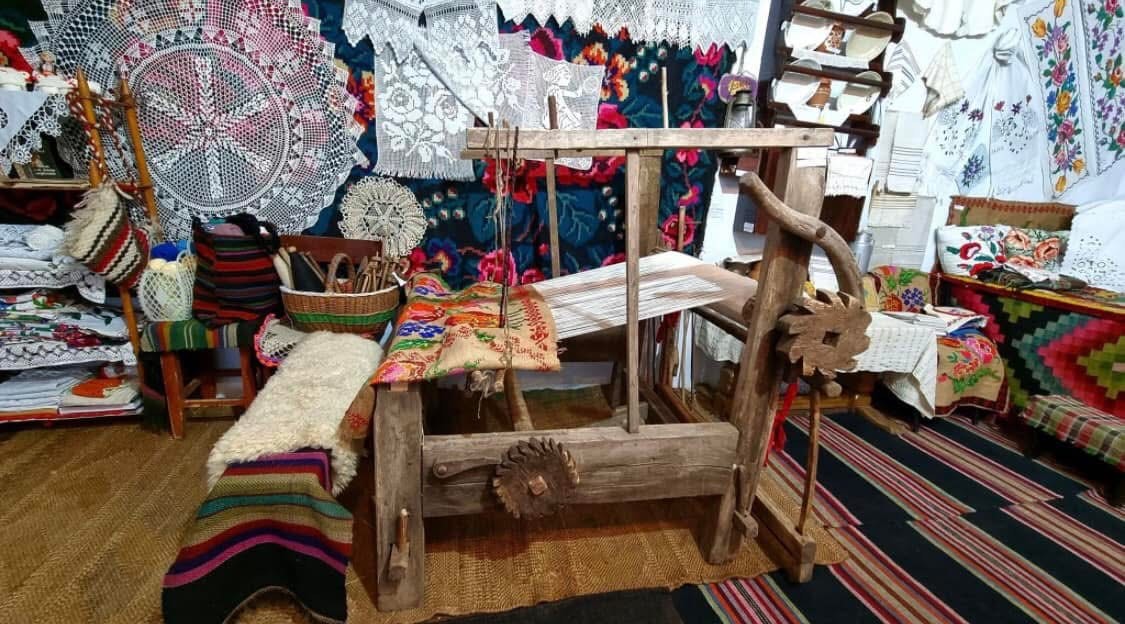
"Archimandrite Sofian Boghiu" memorial house from Cuconestii Vechi
The “Archimandrite Sofian Boghiu” Memorial House was opened in the home village of the great Romanian cleric – Archimandrite Sofian Boghiu. The museum is located in an old house that was practically in ruins at the time of acquisition, the last house that remained after the disappearance of the former village of Cuconestii Vechi. The building was restored for the inauguration of the Father Sofian Boghiu Memorial House within it.
In parallel, he worked with the memory of the locals, who knew Father Sofian, to collect as many testimonies as possible that can provide the overall picture of his personality. The memorial house, after extensive works, opened its doors to visitors for the first time on September 14, 2020.

Father Sofian's gazebo
Recently, near the “Archimandrite Sofian Boghiu” memorial house in the village of Cuconestii Vechi, an access staircase to Prut with 33 reinforced concrete steps and a terrace with a baptistery also called “Parent Sofian’s gazebo” was built. This belvedere, like a swallow’s nest, now dominates the entire surroundings and can be seen from tens of kilometers, from both banks of the Prut.



